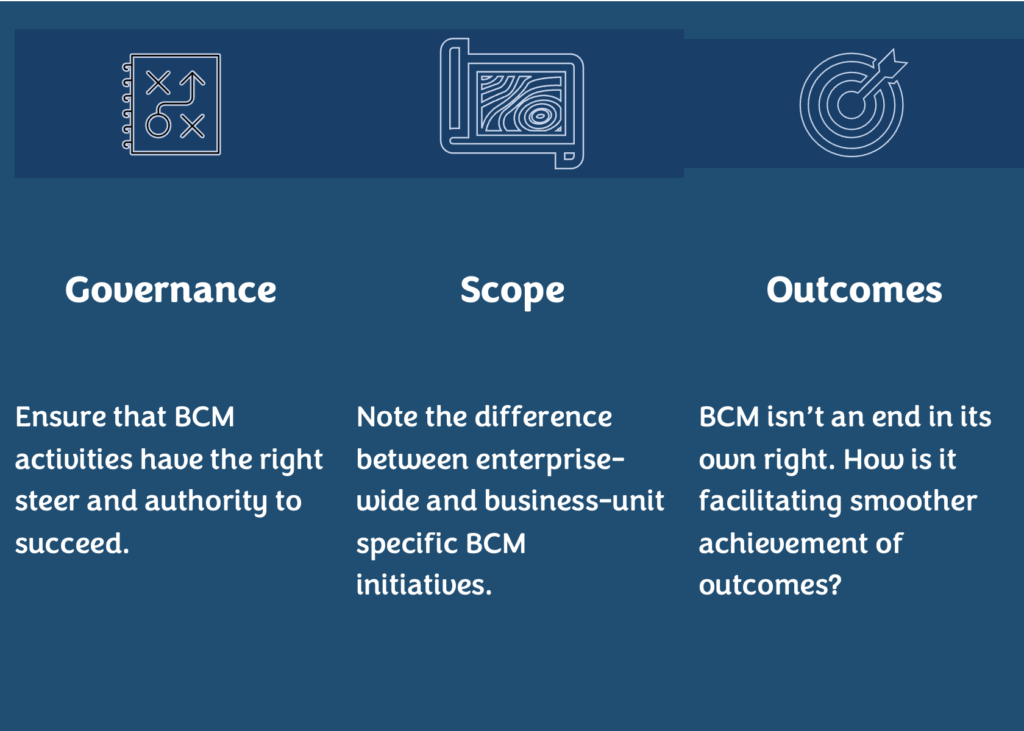Executive Summary
Business Capability Modelling (BCM) is a strategic activity that enables organisations to clearly articulate and visualise what they do to deliver value, distinct from how they do it.This approach creates a common language between business and technology stakeholders, providing a stable foundation for strategic planning, digital transformation, and organisation design. By focusing on capabilities rather than processes, BCM helps organisations understand their core functions, identify gaps, and make more informed decisions about resource allocation and technology investments, while supporting critical activities such as merger analysis and portfolio management.Organisations can expect improved alignment between strategy and execution, more effective change management, and clearer roadmaps for digital transformation initiatives. Success in BCM implementation typically begins with high-level capability mapping across business units. This is followed by wider engagement of business and IT stakeholders, further development of standardised terminology, and regular model updates. When properly executed, BCM serves as a foundational tool for strategic planning, enterprise architecture, process optimisation, and organisation design, ultimately enabling businesses to adapt and thrive in an increasingly complex digital environment.
What is Business Capability Modelling?
Business Capability Modelling (BCM) is a systematic approach to understanding an organisation’s capabilities. It involves identifying, documenting, and visualising the key processes, functions, and competencies that enable the business to deliver value to customers and stakeholders. BCM provides a shared language and framework for leaders, managers, and teams to communicate and collaborate around their respective roles and responsibilities.
Benefits of Business Capability Modelling
One of the primary benefits of Business Capability Modelling is improved communication among stakeholders. By providing a shared understanding of an organisation’s capabilities, BCM facilitates clear and concise communication between teams, departments, and even companies. This leads to better collaboration, reduced misunderstandings, and a more cohesive approach to achieving business objectives.
Through quantifying strategic outcomes in terms of the changes in Business Capabilities, specifically regarding increases in maturity, transformation leaders can plot roadmaps in a manner that is easily understood by others using the same model. Using an enterprise-wide model, directors can evaluate the respective impact of multiple change portfolios. This puts leaders in a better position to make more informed decisions about investments, resource allocation, and strategic initiatives.
The benefits of Business Capability Modelling also extend to enhanced collaboration among teams and departments. By visualising the interdependencies between processes and functions, BCM highlights opportunities for process simplification, automation, and standardisation.
This leads to a more cohesive and efficient approach to delivering business outcomes, resulting in improved productivity, reduced costs, and increased customer satisfaction.
Additionally, BCM facilitates the identification of areas where synergies can be achieved, leading to the creation of new business models, products, and services that drive growth and revenue.Business Capability Modelling also leads to increased efficiency within an organisation. By identifying and eliminating inefficiencies in processes and functions, BCM enables organisations to optimise their operations and reduce costs. This is achieved through the simplification of complex processes, the automation of routine tasks, and the standardisation of business practices. As a result, organisations can improve productivity, increase customer satisfaction, and drive revenue growth while reducing costs.
Steps to Adopt Business Capability Modelling
There are two approaches, which can develop in parallel assuming appropriate management and governance.
The first is the more formal, strategic approach to business capability modelling. The second is piloting in a specific business unit. Both are discussed briefly below, but we advise on blending the two approaches for the best results.
Strategic Approach
Firstly, establish a BCM programme office: Set up a function to oversee the BCM programme. This will ensure that the necessary resources are allocated to support the adoption of BCM throughout the organisation. This is often a virtual team, bringing together people from multiple departments.
Next, develop a BCM framework: Create a tailored framework that reflects the organisation’s unique needs and requirements. This will involve identifying the key processes, functions, and competencies that underpin the business. These are used as input to define the organisation’s Business Capability Model
Then, train stakeholders: Provide training and guidance to organisational leaders, managers, and teams on the principles of Business Capability Modelling and how to apply it in practice.
Afterwards, conduct a BCM assessment: Conduct an initial assessment of the organisation’s capabilities to identify areas for improvement. This usually centres on the concept of maturity, to understand the current maturity and expected maturity. This provides an opportunity for benchmarking, further adding to strategic options.
Following this, develop a BCM roadmap: Create a detailed plan outlining the steps required to adopt Business Capability Modelling across the organisation. This should include timelines, resource allocation, and metrics for measuring progress.
Finally, embed BCM into business operations: Ensure that Business Capability Modelling is fully integrated into the organisation’s daily operations. This will involve embedding BCM principles into business processes, systems, and procedures.
Pilot Approach
Begin with a Pilot Program
Rather than attempting an enterprise-wide rollout, organisations could start with a focused pilot in a single business unit. Select a division that has well-defined boundaries and supportive leadership. This approach allows you to refine your methodology, demonstrate value quickly, and develop internal expertise before scaling. Aim for a 3-6 month pilot that can deliver tangible results and learnings.
Establish Clear Governance
Implement a robust governance framework that defines roles, responsibilities, and decision-making processes. Create a dedicated capability modelling team with representatives from both business and IT. Establish clear ownership for each major capability, and define processes for model updates, version control, and conflict resolution. Document standards for capability definition, naming conventions, and level of detail.
Invest in Tools and Training
Select appropriate modelling tools that balance usability with functionality. Office tools such as Microsoft PowerPoint and Excel are perfectly functional for a pilot scale. If they’re not, then it’s more indicative that the pilot may be too large to tackle.
Dedicated capability modelling software becomes crucial as complexity grows. Invest in comprehensive training programs for both the core team and stakeholders. Focus on practical workshops where participants can apply BCM concepts to real business scenarios.
Regular Review Cycles
Institute quarterly review cycles to ensure the model remains current and valuable. Establish metrics to measure the model’s effectiveness and usage. Schedule systematic reviews with capability owners to update maturity assessments and strategic priorities. Create feedback loops with strategic planning processes to ensure capability gaps inform investment decisions.
Integration with Existing Processes
Don’t treat BCM as a standalone initiative. Instead:
- Integrate it with strategic planning, enterprise architecture, and portfolio management processes.
- Use capability assessments in budget planning cycles.
- Link capability metrics to performance management systems.
- Ensure capability models inform technology roadmaps and project prioritisation.
Gain External Advice
Whichever approach you choose, it pays to not do it alone or you’ll risk making the same mistakes others have made previously in other organisations.
Hire in experts from external consultancies, not trainers, but practitioners who have done this before. The ideal situation is one that complements your internal team, increasing the knowledge and supporting the skills that already exist.
For instance, you could use external consultants to create the framework and the initial high-level business capability model. While these two deliverables should already be tailored to your organisation as part of the engagement, the more you use them, the more adaptations you’ll want to make. Much like living in a house, you may wish to redecorate, repair, extend, etc. This governance would be handled internally.
For the pilot exercise, you could use external support to either conduct the exercise, with your staff shadowing and learning or to guide your staff in the execution.
Another route to gaining knowledge is to find others in your industry in similar positions. This is easier if in Government or Health agencies where there are fewer issues with competition, but there are groups of architects across most industries.
Points to Consider

What does a good team look like?
These roles are typically expected for developing the initial Business Capability Model. The allocation of people to roles should take into account the size of the project and the skills/experience available to you. For smaller projects, some of these roles can be blended.
| Sponsor | The leader who is commissioning the project |
| Project Manager | Actively monitors and manages the project towards deliverables, resolving blockages within your organisation and liaising with external suppliers |
| Lead Architect | Designs the overall framework, taking into account existing frameworks within your organisation, industry frameworks, governance and the needs of the project |
| Business Architect | Develops the initial high-level Business Capability Model |
| Business Analyst | Works with the Business Architect, gathering and analysing information from across the business |
| SMEs | Provide information about the business, through interviews, meetings, documents, site visits |
| Admin | Arranges site access, meetings, calendars. This activity includes a high number of interactions |
Conclusion
Business Capability Modelling offers a powerful approach for organisations to understand, communicate, and improve their operational capabilities.
By adopting this methodology, organisations can enhance collaboration, increase efficiency, make better decisions about investments and strategic initiatives, and drive growth, revenue, and competitiveness.
As the business continues to evolve, Business Capability Modelling will play an increasingly important role in helping your organisation stay relevant.
Download
For a downloadable copy of this article:



Leave a Reply